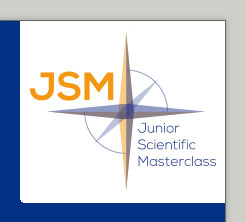Onderzoeksproject aanpassen
Projecten zijn uitsluitend aan te passen door bij het project behorende onderzoekers.
Geef via het uitrolmenu aan welke onderzoeker u bent. Nadat op u de button 'Edit project' heeft geklikt, wordt automatisch een e-mail verstuurd naar het e-mailadres van de onderzoeker die u heeft gespecificeerd.
In deze e-mail staat een link waarmee u het project kunt wijzigen.
Project properties
| Background / introduction |
|---|
The liver has a unique capacity to regenerate. Following a partial hepatectomy in animals or humans, the liver is able to fully regenerate to its original size. However, after a liver resection in humans, some patients fail to regenerate, which may eventually lead to death or requirement for a liver transplantation. At present, no therapeutic strategies to stimulate liver regeneration are available.
Recently, blood platelets have been identified as crucial players in liver regeneration in animals and humans, and stimulation of blood platelet-mediated liver regeneration may be a novel therapeutic approach to treat patients with a failing regenerative response. The mechanisms responsible for blood platelet-mediated liver regeneration are poorly understood, but may involve release of liver-directed growth factors that are stored in platelets.
|
| Research question / problem definition |
|---|
|
We aim to investigate 1) the relevance of growth factors stored within the platelet for platelet-mediated liver regeneration, 2) the relevance of de novo synthesis of these growth factors. Although platelets lack a nucleus, it has been recently described that platelets are able to synthesize proteins from mRNA, and it may be that de novo synthesize of liver-directed growth factors is required for efficient liver regeneration, 3) the role of platelet uptake by hepatocytes for liver regeneration. We have recently found that platelets enter hepatocytes by yet unidentified mechanisms. We aim to elucidate these mechanisms and at the same time assess whether uptake is required for stimulation of hepatocyte mitosis.
|
| Workplan |
|---|
|
Using in vitro models we will determine whether platelets are able to synthesize liver-directed growth factors, and by using RNA silencing approaches test whether de novo synthesis of these growth factors is required for stimulation of hepatocyte growth, both in healthy and diseases hepatocytes. We will study the processes involved in platelet uptake by hepatocytes in cell culture models, and identify to which parts of the cell the platelet travels before releasing its contents, and determine whether these processes are required for platelet-mediated stimulation of hepatocyte mitosis. Finally, using rodent models of liver resection, we will determine platelet trafficking within the regenerating liver over time by using liver tissue taken at various time points after liver resection which will be analyzed by histology and electron microscopy. Also, the relevance of findings from the in vitro studies will be tested in these in vivo models.
|
| References |
|---|
|
Science. 2006;312(5770):104-7, Ann Surg. 2010 Feb;251(2):300-6, Semin Thromb Hemost. 2010;36(2):170-4.
|


